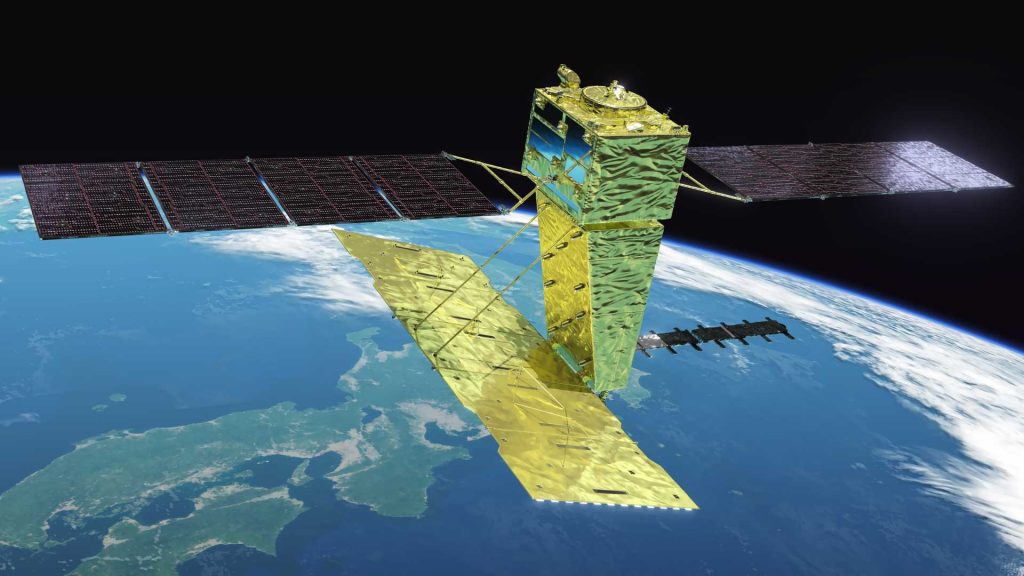
日本Daichi-4:實現世界最高資料傳輸速度
・在Ka頻段衛星與地面之間成功實現3.6Gbps傳輸
・獲得金氏世界紀錄TM認證!
我們將為您提供 JAXA 發表的文章摘要。
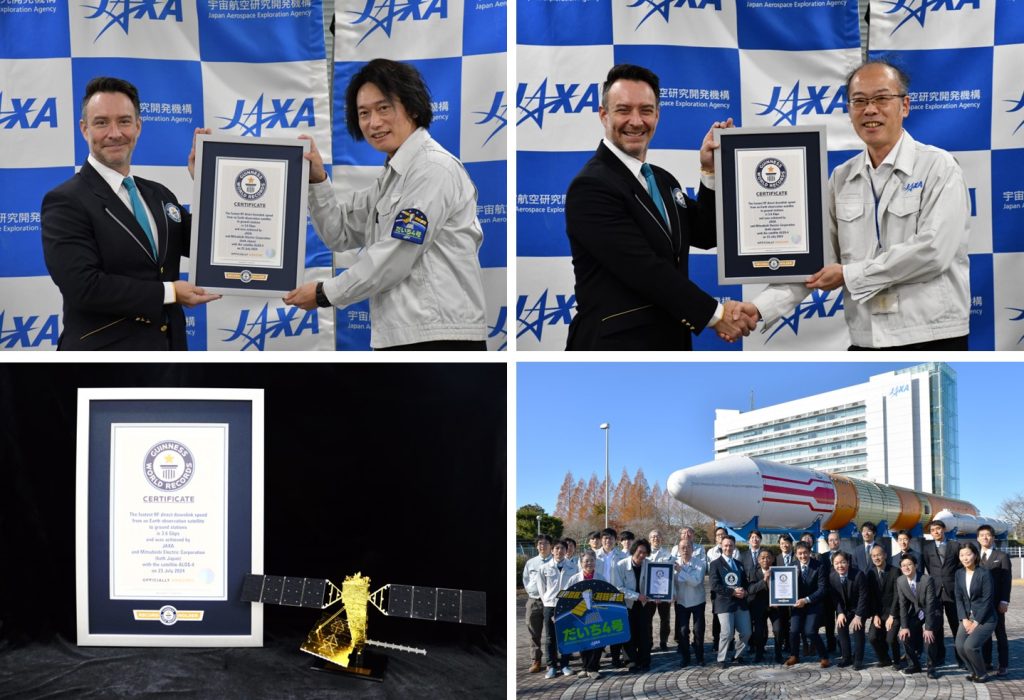
Advanced radar satellite: “Daichi-4” (ALOS-4)
In July 2024, “Daichi-4” succeeded in transmitting 3.6Gbps data in direct Ka band transmission.
Certified as a Guinness World Records: TM (※1)
An official certificate presentation ceremony was held at the Tsukuba Space Center on December 19, 2024.
The fastest RF direct downlink speed from an Earth observation satellite to ground stations is 3.6 Gbps
and was achieved by JAXA and Mitsubishi Electric Corporation (both Japan) with the Satellite ALOS-4 on 23 July 2024

Direct transmission from an Earth observation satellite to a ground station:
“DAICHI-4” (ALOS-4) has achieved ultra-high-speed “satellite-to-ground station observation data transmission.”
It succeeded in achieving ultra-high-speed communication of 3.6 Gbps and was recognized by the Guinness World Records.
What is the speed of 3.6 Gbps?
1. It is the speed at which 27 GB (Giga Byte) of data can be sent in one minute.
2. In terms of smartphones, “even if you sign up for a 50 GB plan, you can only use it for 2 minutes.”

JAXA Project Manager: Yukihiro Kankaku
1. “DAICHI-4” is an expanded version of “DAICHI-2.”
2. DAICHI-4 has expanded its observation width by four times while maintaining its resolution.
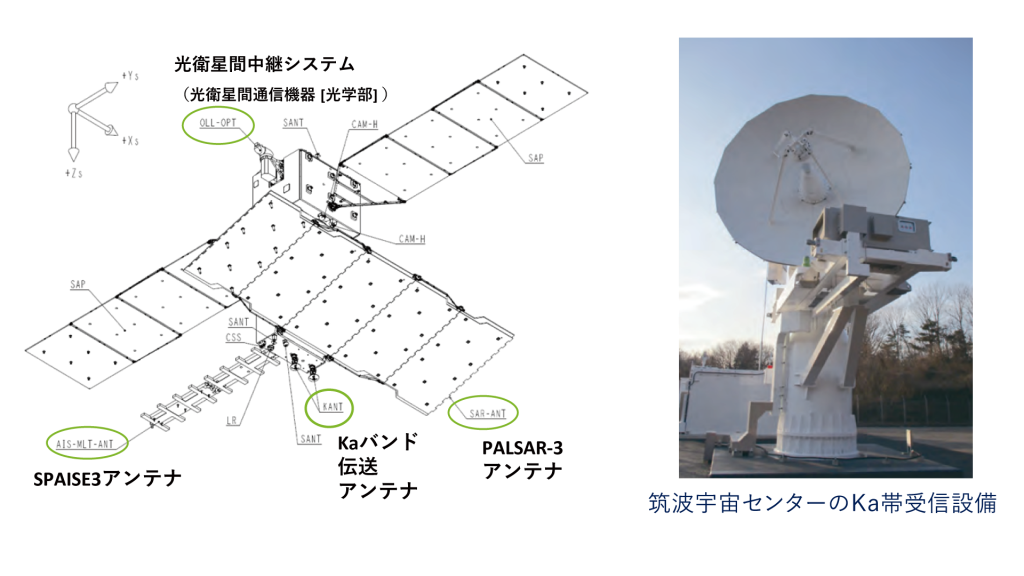
Adopting Ka-band instead of X-band:
1. DAICHI-4 does not use the conventional X-band.
2. DAICHI-4 adopts “Ka-band, which has a wider allocated frequency band.”
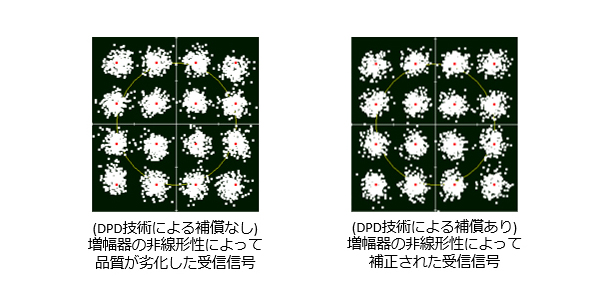
Developing signal distortion correction technology (※2):
Research by JAXA’s development department has adopted technology (※2) to compensate for signal distortion.
The current transmission speed is 3.6Gbps, but we plan to increase it even further in the future.
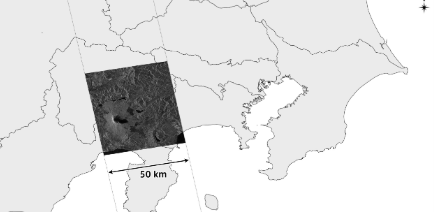
Providing clearer observation images:
“Expanding the observation width by four times compared to previous models” will provide “clear images from dual-polarized observation.”
1. DAICHI-4 temporarily records observation data in semiconductor memory inside the satellite.
2. The timing of transmitting the memory data to the ground station is calculated and provided.
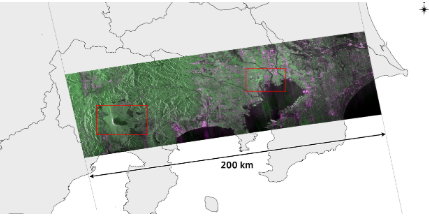
Communication speed: 4.5 times faster than DAICHI-2:
1. DAICHI-2 transmits 60GB of data in 10 minutes at a communication speed of 0.8Gbps.
2. DAICHI-2 has the drawback of decreasing observation distance even though its observation width increases.
DAICHI-4 can transmit 270GB in 10 minutes at 4.5 times the speed of DAICHI-2 (=3.6Gbps).
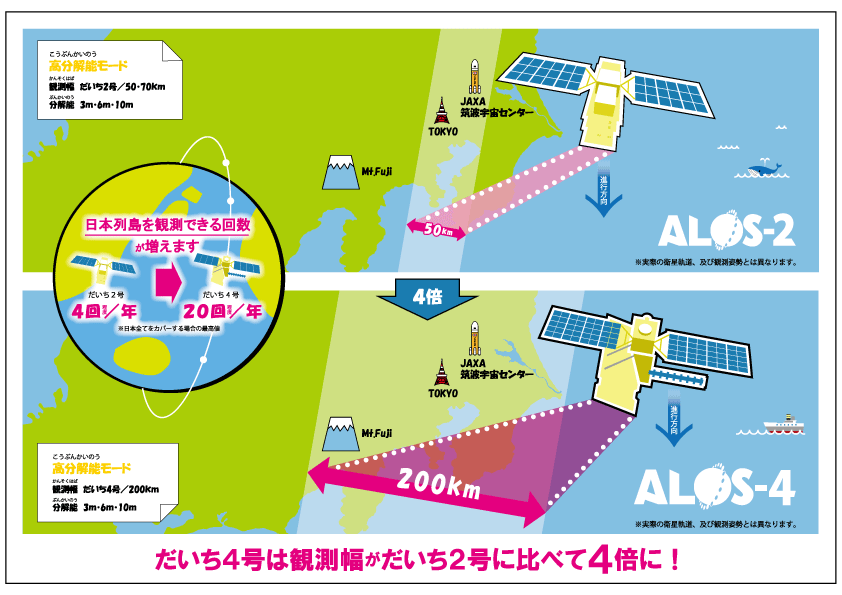
3m resolution and observation width: 4 times that of DAICHI-2:
1. DAICHI-2’s observation width with 3m resolution was 50km.
2. DAICHI-4’s observation width with 3m resolution is 4 times that, at 200km.
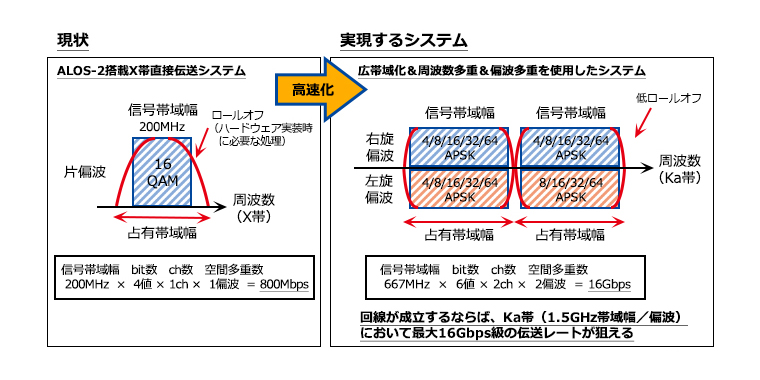
Dual polarization observations available at all times:
1. Furthermore, observations will be made at all times using two types of polarization: HH polarization (horizontal polarization transmission/horizontal polarization reception) and HV polarization.
2. It is now possible to synthesize dual polarized observation data and create pseudo-color images.
It is now easier to distinguish the conditions on the ground, which will contribute to understanding disaster situations and monitoring deforestation.

Summary of performance improvements:
1. Communication speed: DAICHI-2: 0.8Gbps → DAICHI-4: 4.5 times faster, 3.6Gbps
2. Amount of communication data per 10 minutes: DAICHI-2: 60GB → DAICHI-4: 270GB
3. Observation width: DAICHI-2: 50km → DAICHI-4: 200km
4. Observation method:
DAICHI-2: Dual polarized observation was possible, but continuous observation was not possible.
DAICHI-4: Near Japan, the resolution is 3m, and continuous dual polarized observation is possible.
High-speed data communication targets: Japan, Sweden, Canada
DAICHI-4 is currently transmitting data to ground stations in three countries.
1. Tsukuba Space Center (Ibaraki), Earth Observation Center (Saitama)
2. Swedish Space Corporation (SSC) Esrange Station (Sweden),
3. Data being transmitted to the ground station at Inuvik Station (Canada).
https://www.satnavi.jaxa.jp/ja/news/2025/01/23/10426/index.html